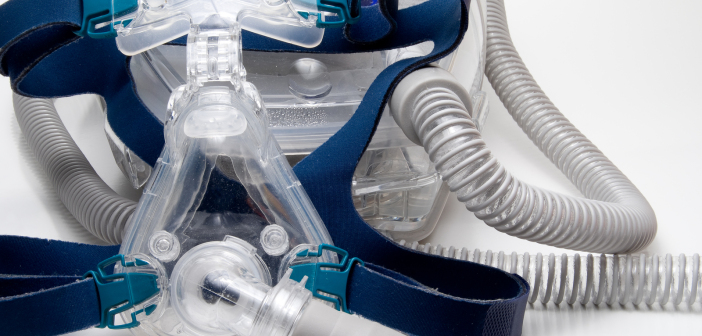The machines are discussed more and more on television, the Internet, and in newspapers. But for many people, hearing about a CPAP machine and knowing what it does are two different things—and when medical terminology begins to be used, their eyes tend to glaze over in confusion.
The truth is that CPAP machines aren’t that complicated to use or explain. But it does require an explanation of why they’re used in the first place, and their essential role in helping people stay alive.
Sleep apnea and its causes
The disease called sleep apnea is a fairly new diagnosis; most doctors didn’t understand what caused it until approximately 50 years ago, although there were various ideas. Essentially, sleep apnea can be described as the brain forgetting to breathe during sleep; throat muscles close up and don’t reopen, leaving the body without oxygen. These pauses can last from seconds to minutes with carbon dioxide building up in the bloodstream.
Most people, once their body is starved of oxygen, will wake up and begin breathing again. But there are effects from untreated sleep apnea; for those unable to get a good night’s rest, moodiness, poor decision-making and loss of memory can result. Imagine someone never being able to get a good night’s sleep, and that provides a good idea of the results of sleep apnea. Some people have even suffered heart attacks during a sleep apnea episode.
A treatment for sleep apnea: the CPAP machine
In the early 1980s, scientists developed a machine that would help treat sleep apnea called the CPAP machine. CPAP stands for continuous positive airway pressure, and the invention would help millions suffering from the effects of lack of oxygen and poor sleep.
The CPAP machine solves the problem of carbon dioxide buildup by bypassing the throat altogether and supplying oxygen through a different route—the nose. A small mask is placed over the nose, and generally straps are tightened around the head to provide a tight seal between the face and mask. The mask is connected to a flexible hose that connects to the CPAP machine itself, which may also be connected to a humidifier.
Once the machine is turned on, oxygen begins to flow from the machine through the hose to the mask. Machines usually have a “ramp” feature, starting with low air pressure from the machine and slowly increasing the pressure over a certain length of time—usually 20 minutes or more. With the machine feeding oxygen to the body, carbon dioxide doesn’t build up and a person can enjoy a good night’s sleep.
Possible problems using a CPAP machine
When first using a CPAP machine, finding a mask that fits is vital. According to CPAPMan, “There is no one-size-fits-all mask, so users should check other masks if the first one is uncomfortable or doesn’t fit. Having a beard, mustache or goatee may prevent the mask from creating a tight seal, so it may take a few tries and different-sized masks before finding the ideal one.”
The biggest problem most people have is using the machine itself. For many people, placing a mask on their face and being attached to a hose can trigger feelings of claustrophobia. The National Heart, Blood and Lung Institute suggests holding the mask up to the face for short times during the day, then wearing it with the straps on for short periods. Later, the hose can be attached once the user is comfortable with it. It’s not uncommon to need at least a month to get used to it.
The CPAP machine is not the only way to treat sleep apnea; people suffering from sleep apnea should always consult with a doctor regarding treatment. However, studies have shown that CPAP can improve reaction time, concentration, and memory in patients using it.




